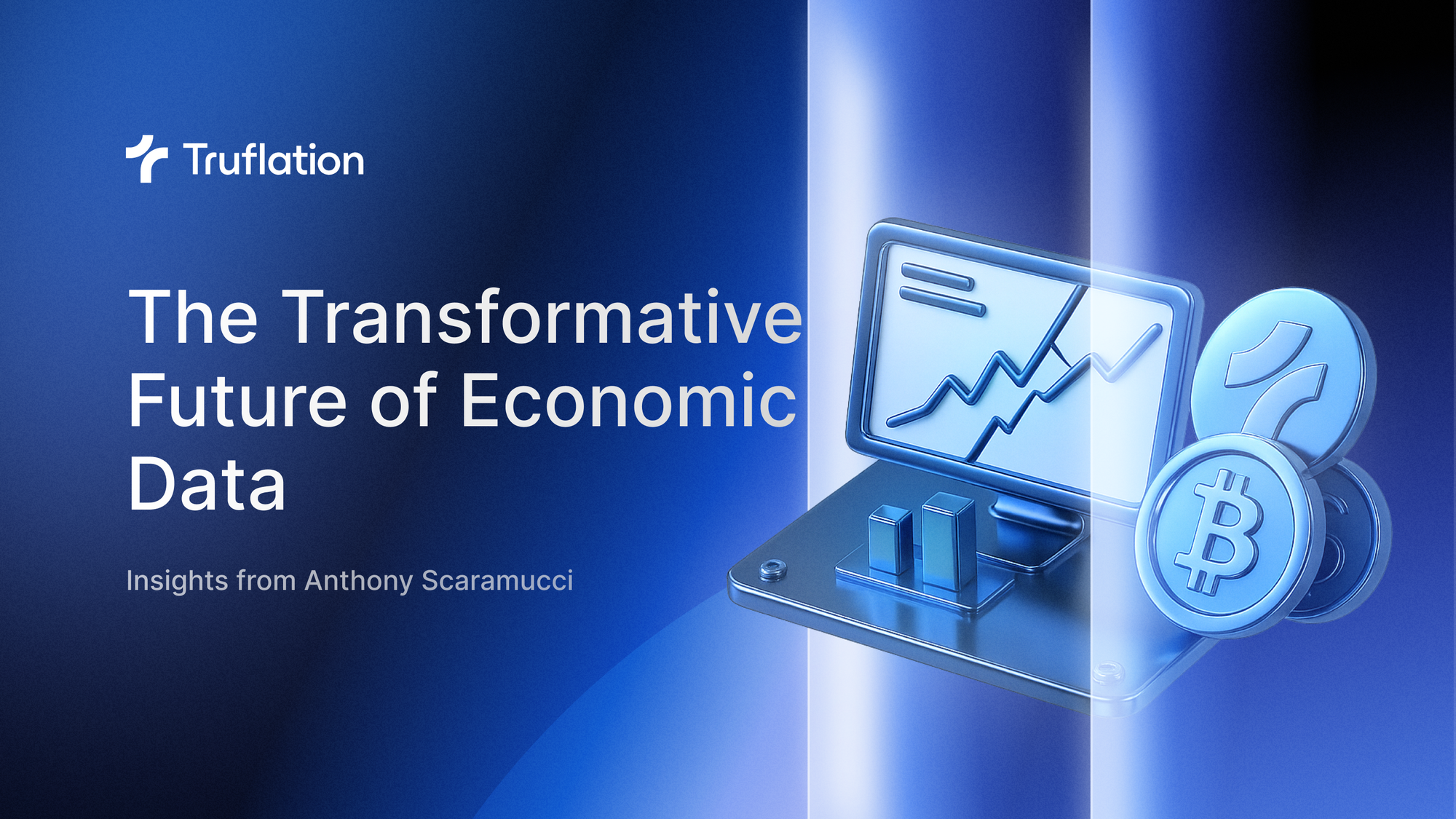Revolutionizing Economic Data with Blockchain: Insights from Anthony Scaramucci

🎙️ A Conversation with Anthony Scaramucci
In today’s fast-paced economic environment, the importance of reliable data has never been more crucial. With misinformation on the rise, both individuals and businesses need accurate data to make well-informed decisions. In a recent podcast, Stefan Rust, Truflation’s founder had an insightful conversation with Anthony Scaramucci about how blockchain technology is transforming economic data, particularly in providing real-time insights that are critical for today’s decision-makers.
Is the Bureau of Lagging Statistics Holding Us Back?
Traditional economic indicators often fail to deliver timely, relevant insights. Stefan once referred to government data as the "Bureau of Lying Statistics," but now prefers calling it the "Bureau of Lagging Statistics." This shift in terminology highlights how outdated traditional data sources are, and the increasing difficulty they pose for investors and businesses who rely on up-to-date, actionable information.
The Issues with Traditional Economic Data
- Delayed Insights: Government reports often arrive weeks or months after significant economic events, leaving stakeholders without timely information.
- Inherent Biases: Economic data can be manipulated, leading to skewed interpretations that affect market strategies and decision-making.
- Limited Access: Centralized data sources restrict public access, preventing individuals and businesses from obtaining critical information when they need it.
How Blockchain Can Fix This
Anthony pointed out the inefficiencies in central banking systems, likening them to "drunk driving with the money." In contrast, blockchain technology offers a decentralized, transparent solution that gives access to real-time economic data. This approach is particularly important for Truflation’s audience, who are seeking independent and reliable inflation metrics.
The Advantages of Blockchain for Economic Data
- Decentralization: Blockchain allows users to access data without relying on any single entity, enabling more informed decision-making.
- Transparency: With real-time data verification, users can trust the accuracy of the information they’re working with.
- Instant Updates: Blockchain ensures that economic indicators are updated in real-time, giving users access to the most current data for timely decisions.
The Growth of Stablecoins
Their discussion also explored the rapid expansion of stablecoins. Stefan foresees the stablecoin market growing into a $2 trillion industry as banks and financial institutions begin to issue their own digital currencies. This trend will improve the liquidity and efficiency of the global economy, making stablecoins a key area of interest for both investors and businesses.
Why Stablecoins Matter
- Increased Liquidity: Stablecoins offer a stable medium for transactions, reducing the volatility often seen in traditional markets.
- Global Adoption: As financial institutions embrace stablecoins, their use will become more widespread and accepted.
- Catalyst for Innovation: The rise of stablecoins is driving innovation in financial products and services, creating new opportunities for both businesses and consumers.
The Need for Accurate Data
One of the key insights from our discussion is the stark contrast between the inaccurate, outdated data used by governments and the real-time data available through blockchain. Blockchain technology is bridging this gap, enabling better-informed policy-making and giving businesses and individuals the tools they need to thrive.
Achieving Better Outcomes with Accurate Data
- Smarter Policy Decisions: Real-time, accurate data allows policymakers to make more informed decisions, leading to more effective governance and economic stability.
- Informed Business Strategies: Companies can leverage up-to-date insights to swiftly adapt to economic shifts, giving them a competitive edge.
- Empowering Individuals: Consumers have access to tools that allow them to navigate financial decisions more effectively, leading to a more informed public.
Conclusion: Embracing the Future of Economic Data
As we enter this transformative era, embracing new technologies and innovative solutions is critical for ensuring access to accurate, real-time economic data. Blockchain is paving the way for the future of economic data, and its potential to change how we understand and utilize financial information is enormous.
For continuous insights at the intersection of blockchain technology and economic data, stay connected with Truflation as we lead the way in providing independent, real-time economic metrics that empower smarter decision-making for individuals and businesses alike!
Truflation | TRUF.Network | X | Linkedin | Discord | Telegram | Github| YouTube

